
 |
Home | Tibet Main | Contact |
Updated: October 2011. Click on an image to see the FULL size with a caption.
The following reference information is included:
My rating scale:
 Excellent ;
Excellent ;
 Very Good ;
Very Good ;
 Good ;
Good ;
 Fair ;
Fair ;
 Poor.
Poor.

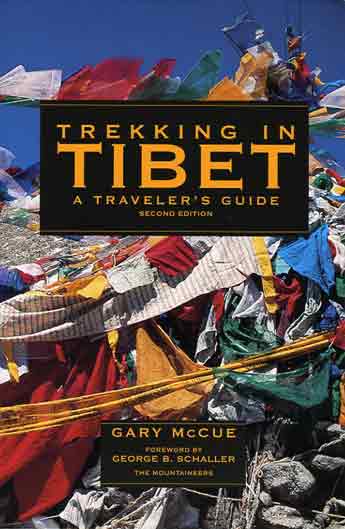
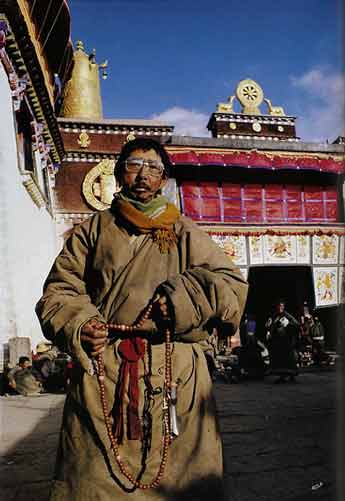

The right amount of detail, well written, accurate descriptions, great maps.

by Gary McCue. Highly recommended! The best trekking book for Tibet featuring treks near Lhasa and Shigatse, and to Everest, Cho Oyu, Menlungtse, Shishapangma, and Kailash.
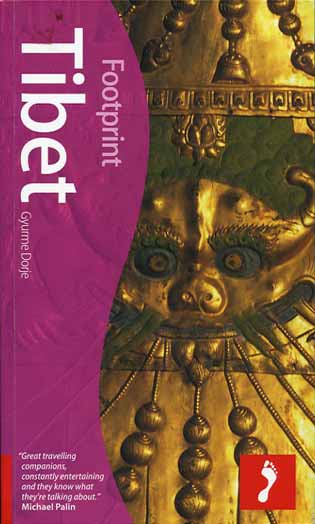
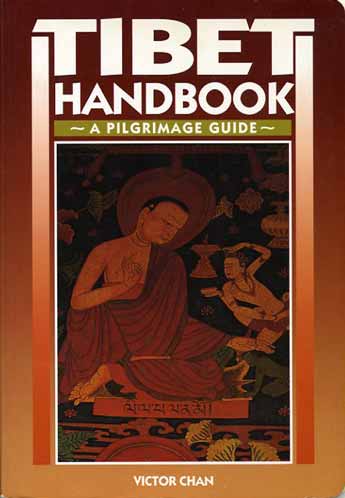

by Gyurme Dorje. More detailed than Lonely Planet, but the travel maps are small and hard to read and some of the place names are not the common ones used.

by Victor Chan. Over a thousand pages. Buy this book if you want extremely detailed information.
This book is an extremely detailed travel and pilgrimage guide with lots of maps. It has a very detailed description of the Lhasa Jokhang Temple and Potala Place.

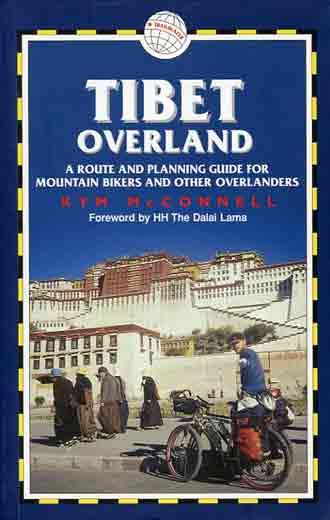

by Atsushi Kanamaru. An excellent book with lots of, eh, maps, providing a very basic description of some treks, including Everest North Face Base Camp.

by Kym McConnell. Especially good for cyclists. Has distances, road markers, things along the way, and some basic information on attractions. I used it to keep my eye out for attractions next to the road.
Tibet is featured in many books. Here are my favourites:
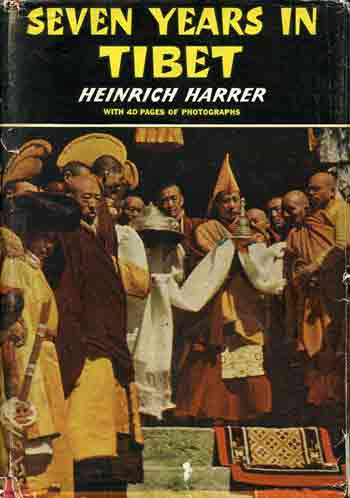

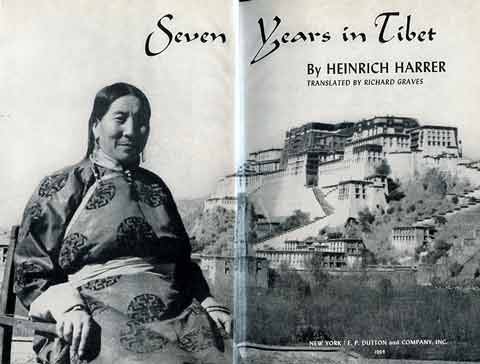

by Henrich Harrer. Originally published in 1953, Harrer recounts the story of his escape with Peter Aufschnaiter from a British internment camp in India in 1944, their daring trek across the Tibet, and their happy stay in Tibet. Harrer eventually became tutor to the teenaged Dalai Lama. The author's vivid descriptions of Tibetan rites and customs capture its unique traditions before the Chinese invasion in 1950, which prompted Harrer's departure.
The 1953 US Edition features 40 pages of b/w photos, while the 1953 British edition has 1 page of colour and 24 pages of b/w photos. About half of the photos in the British edition are not in the US Edition.
The story is a classic. The photos are very good.
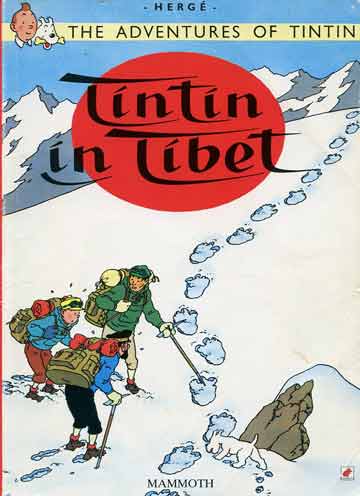
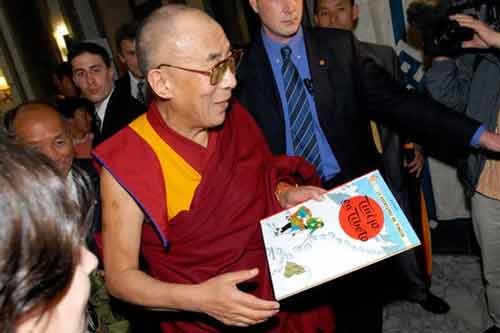

by Herge. After Tintin's friend Chang's plane crashes in the Himalayas, Tintin refuses to believe he is dead, and launches an expedition to find him. Along with Captain Haddock and Snowy, he travels through New Delhi and Nepal, before getting to the mountains. In Tibet they experience the hazards of mountain climbing, the gentle Tibetan Buddhist monasteries and the Yeti, before rescuing Chang.
My favourite Tintin book is fun and educational for both kids and adults, quite often being people's first introduction to Tibet, its beautiful landscape and culture.
In 2006, Tintin became the first fictional character to be awarded the Dalai Lama's Truth of Light award.
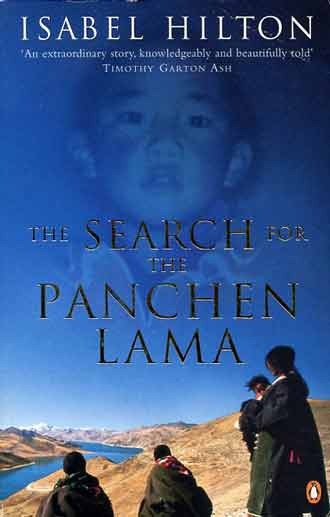
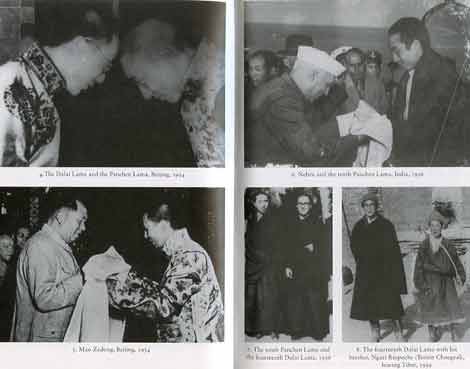

by Isabel Hilton. This true story of the behind the scenes intrigue surrounding the finding of the Eleventh Panchen Lama in 1995 is far more exciting than any fiction writer could dream of. The author details the history of the Panchen Lama and its relationships with the Dalai Lama and the Chinese.
Hilton offers a compelling biography of the Tenth Panchen Lama, who remained in Tibet after the Chinese occupation. He naively presented his frank review of the Chinese policies on Tibet to the Chinese government, but was imprisoned and not released until after Mao's death. He continued to fight for Tibet's rights and mysteriously died in 1989.
Both the Chinese government and the Dalai Lama looked for his reincarnation, but identified different children. The Dalai Lama's choice was immediately taken into Chinese custody, and is often called the youngest political prisoner in the world.
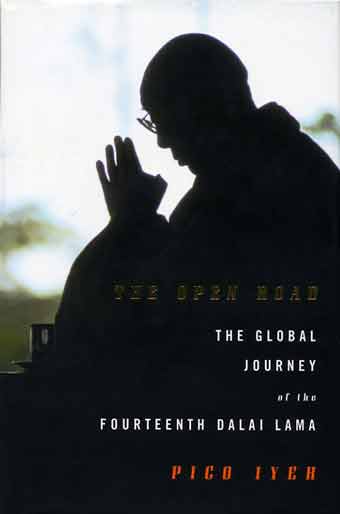

by Pico Iyer. Published 2008. Pico Iyer has known the Dalai Lama, a friend of his father’s, for over 35 years. Weaving together conversations with the Dalai Lama, the Dalai Lama's brother Ngari Rinpoche, Tibetan leaders, and monks, and following the Dalai Lama on some of his globe-trotting to Nara, Vancouver and Dharamsala, Iyer reveals a man who is a simple monk who meditates for hours each day, the head of the Tibetan Government in Exile, a scholar of Tibetan Buddhism, a reincarnation of Avalokiteshvara, the winner of the 1989 Nobel Peace prize, a prolific author and teacher, a dedicated man of science who is constantly learning, and a global celebrity image.
Pico Iyer’s vivid travel writing, which started with his 1988 debut Video Night in Kathmandu, is strongly in evidence with his colourful descriptions of the scenery, monks, Tibetans, backpackers, foreigners, and Indians of the wild global village of Dharamsala, the home of Tibet's government in exile. Although they revere the Dalai Lama, many younger exiled Tibetans wish for a stronger stance against the Chinese. Even the Dalia Lama admits, "In spite of my open approach, with maximum concessions, Chinese position becomes even harder and harder." I laughed at the meditation centre whose typed schedule lists "Breakfast/Impermanence and Death/Suffering/Selflessness/Dinner/Equanimity".
Iyer contrasts the Dalai Lama’s caring, humanist teachings, "Serving others, best way get one's deep satisfaction ... I treat every human being, whether high officials or beggars - no differences, no distinctions", with the more mystical esoteric aspects of Tibetan Buddhism, "that belongs to the realm of dreams and premonitions and everything that exists outside the conscious mind." The book ends with what I think is a simple yet powerful image, "Then, as we were walking out of the room, [the Dalai Lama] went back and turned off the light. It's such a small thing, he said, it hardly make a difference at all. And yet, nothing is lost in the doing of it, and maybe a little good can come of it, if more and more people remember this small gesture in more and more rooms."
Pico Iyer’s writing is easy to read, but yet deep and insightful at the same time. Iyer weaves history, politics, religion and biography into an excellent, illuminating, insightful and engaging portrait of the Dalai Lama. His description of Dharamsala and its people is an excellent piece of travel writing.
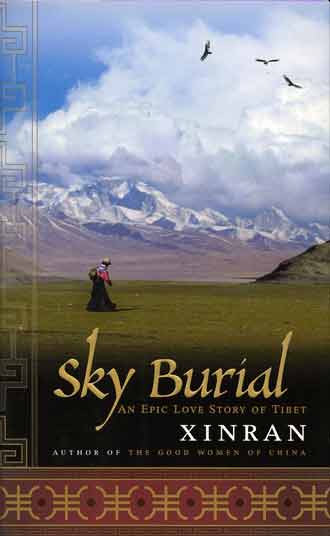

by Xinran. I read this book at the same time as the The Unknown Story of Mao (see below). This book with its loving compassion between Chinese and Tibetans was a much needed antidote to the chillingly brutal terror inflicted by Mao.
Shu Wen and her husband had been married for only a few months in the 1960s when he joined the Chinese army and was sent to Tibet to unify the two countries. Shortly after he left, she was notified that he had been killed. Determined to find the truth, Shu Wen joined a militia unit going to the Tibetan north, where she was soon separated from her regiment. Without supplies and knowledge of the language, she wandered, trying to find her way until, on the brink of death, she was rescued by a family of nomads under whose protection she moved from place to place with the seasons and eventually came to discover the details of her husband's death.
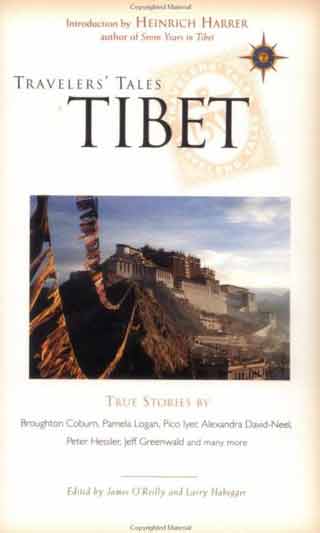

Edited by James O'Reilly and Larry Habegger. This book is a collection of 27 true stories written by authors like His Holiness the Dalai Lama, Pico Iyer, Heinrich Harrer, Alexandra David-Neel, Lama Anagarika Govinda, and many others.
The stories include traveling over high mountain passes, witnessing an ancient sky burial, rebuilding an ancient monastery, making the pilgrimage to Mount Kailash, working as an extra on a Chinese movie set, and visiting the Jokhang Temple, Potala Palace, and Norbulingka in Lhasa.
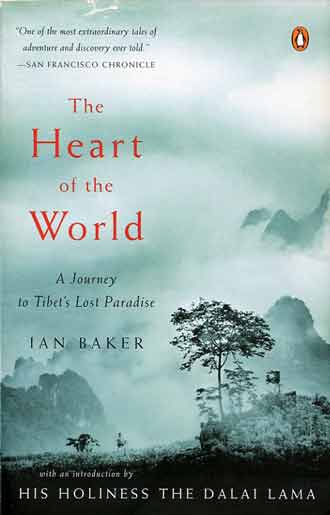
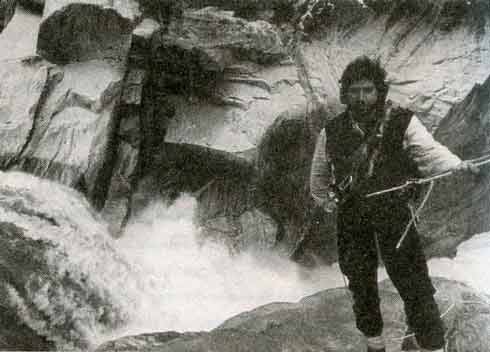

by Ian Baker. This book chronicles the author's determined quest over many years to explore the Yarlung Tsangpo gorges, the world's deepest, and see if a fabled waterfall exists or not. He made news worldwide in 1998 when he penetrated the hidden gorges and found that yes, there is a 108-foot-high waterfall.
Baker introduces the Tibetan Buddhist concept of a beyul, or hidden lands, sacred sanctuaries that reveal themselves to devout pilgrims. The build up over many attempts is frightening as he encounters sheer cliffs, maelstroms of impassable white water, and dense leech-infested jungles. His black and white photos bring many of the passages to life.
"It was like the meeting of two distinct worlds—the world of Tibetan Buddhism and the Victorian era of Western exploration.” - Ian Baker.
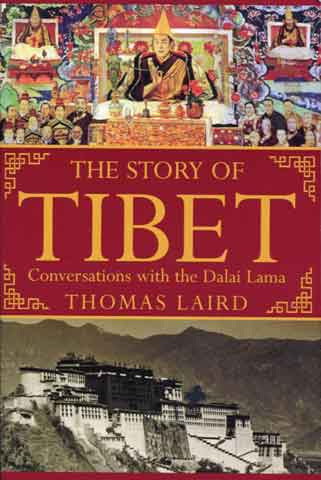
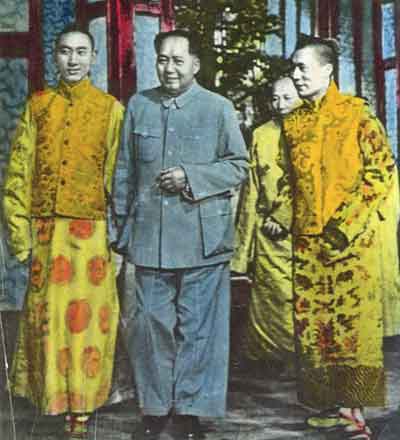
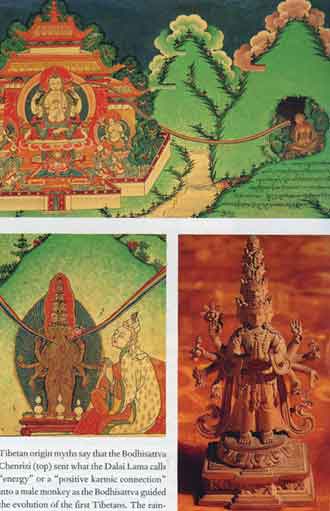


By Thomas Laird. Published 2006. Based on 60 hours of conversations with the 14th Dalai Lama, and independent historical research, Laird created a popular history of Tibet. There are 32 pages of photos and paintings, most in colour.
All the famous figures of Tibet are here: Songtsen Gampo, Padmasambhava, Atisha, Milarepa, Tsongkhapa, the Great Fifth Dalai Lama, the 13th Dalai Lama, the 10th Panchen Lama, and the 14th Dalai Lama. Laird uses historical information to balance and sometimes challenge the Dalai Lama's stories and views of Tibet History, science, reincarnation, and Buddhism. There is no attempt to cover up or gloss over the challenges in Tibet for the 14th Dalai Lama. "[The sweepers] showed me the way of life of ordinary people and all the different taxes they had to pay and the indiscrimination and injustice." The Dalai Lama gained a passion for reform, and was eager for modernization.
The current Tibet Chinese issues are also discussed. "Chinese claim that Tibet has been an inalienable part of China since the thirteenth century is based primarily on the false argument that Mongolia was part of China when it subjugated Tibet." The Dalai Lama ends the book on a positive note: "We may disagree on the past, but we should work constructively to improve the present and to reach an agreement on the way to move forward, together, in the future in the interest of the Tibetans and the Chinese."
This book is probably more than most readers want to know about Tibet history, but I think the post-1900 information helps explain today's Tibet situation. The sections where the 14th Dalai Lama can speak first-hand are especially relevant.
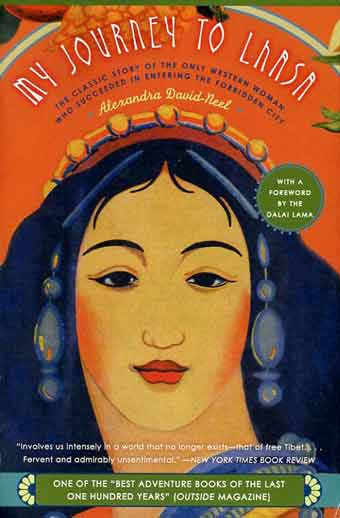
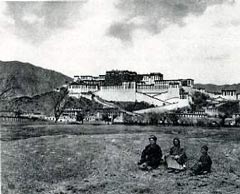
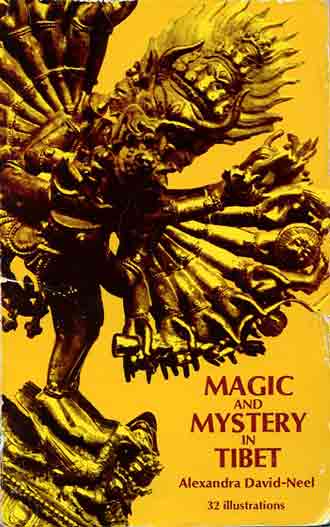
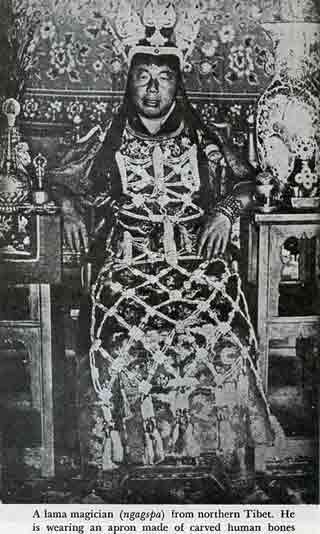

by Alexandra David-Neel. In 1923 at the age of 55, Alexandra David-Neel disguised herself as an old Tibetan pilgrim and traveled for four treacherous months with her young companion, Lama Yongden, all the way to Lhasa, becoming the first European woman ever to enter Lhasa. Along the way, she had to endure the primitive and often dangerous travel conditions, and the ever-present danger of being caught.

by Alexandra David-Neel. First published 1929. David-Neel describes her spiritual experiences in Tibet, meeting lamas and visiting monasteries, practicing meditation and breathing exercises, and witnessing psychic phenomena like the control of body heat, having visions, and past life recollection. In one chapter she describes the lung-gom-pas runners who run incredible distances while in a trance, warming themselves in the snow through psychic heat.
I really liked these adventure books for their honest descriptions of an earlier, purer Tibetan culture, long before the Chinese invasion. She writes honestly and candidly about the customs and values of the people she meets, neither romanticizing nor criticizing.

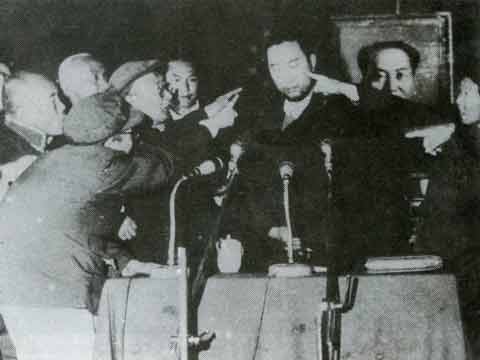

by Jung Chang and Jon Halliday. This book made me very despondent, reading about a man who had utterly no compassion for any human being. I read this book to see why Mao treated the Tibetans as he did, but I came away with deep compassion for the Chinese people who suffered it seems far worse.
Mao's intimate relationship with Stalin went back to the 1920s, ultimately bringing him to power. He welcomed Japanese occupation of much of China and he schemed, poisoned and blackmailed to get his way.
After Mao conquered China in 1949, his secret goal was to dominate the world. Mao's Great Leap Forward in 1958 was disastrous with rampant starvation in China and Tibet causing an estimated 38 million deaths. The Cultural Revolution, starting in 1976, was especially brutal, with Mao's belief that "Religion is poison". In all, well over 70 million Chinese perished under Mao's rule - in peacetime.
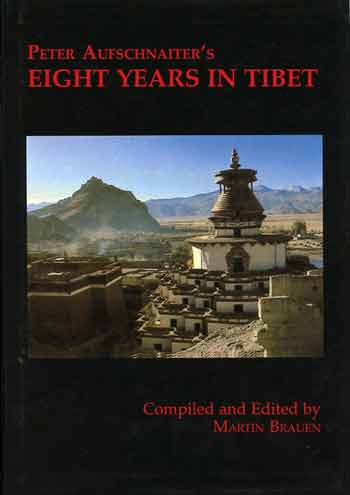
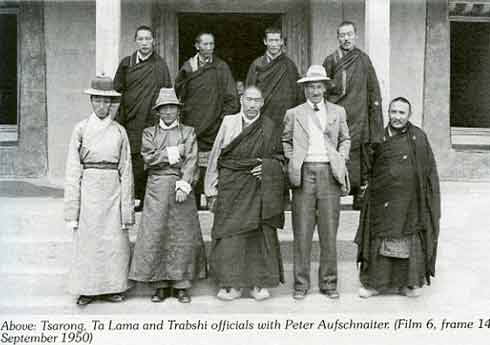

by Peter Aufschnaiter. Finally, the personal notes, sketches and photos of the other man who escaped to Tibet with Heinrich Harrer were published in 2002. The writing is a bit rough around the edges and not polished because, well, eh, they were published 29 years after his death. As is told in the Seven Years in Tibet movie, Harrer and Aufschnaiter lived apart for their years in Lhasa.
This book details Peter's stay in Lhasa and his travels around Tibet, until leaving in 1952. It is illustrated with over 130 photos, about half in colour. Many of the colour photos were taken in 1981. This is a great companion to Harrer's books detailing a lost era in Tibet's history. It includes a large and faithful reproduction of the Lhasa map Aufschnaiter made for the Tibetan Government.
I liked this book for the photos and the insight into Tibet and its lost culture.
Tibet is also featured in many general photographic books. Here are my favourites:
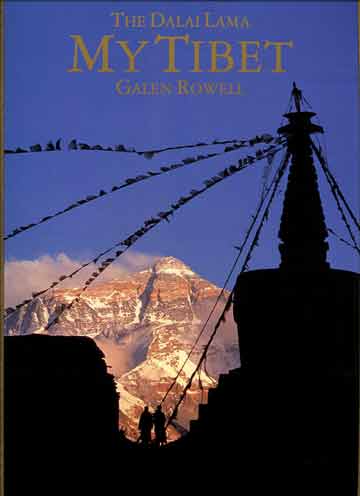
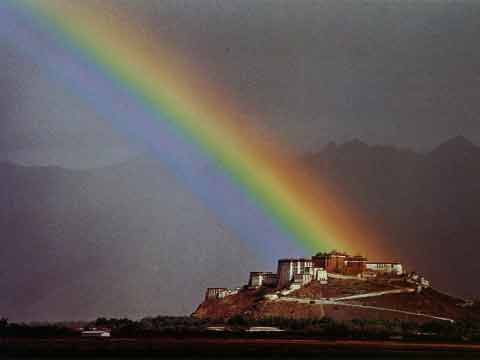
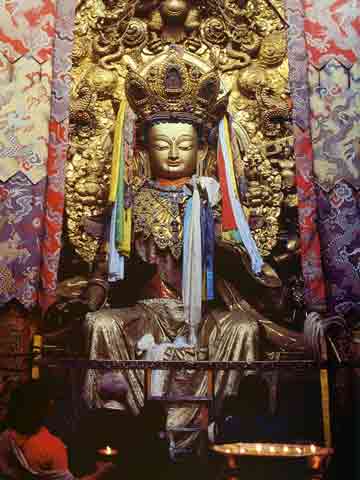
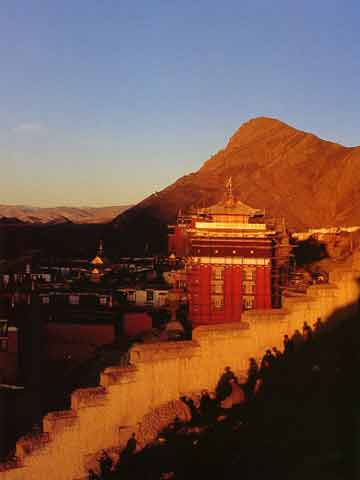

by Galen Rowell. Text by his Holiness the Fourteenth Dali Lama.
This is two books in one. First, it's a coffee-table type book with spectacular photos from world-renowned photographer Galen Rowell. The photos include the mountains and valleys, nomads and pilgrims, animals and plants, and chapters on Amdo, Lhasa, and Mount Kailash.
Second, it features essays by the Dalai Lama that give insight to the photos. His topics include ecology, environment, spirituality, Lhasa and Mount Kailas.
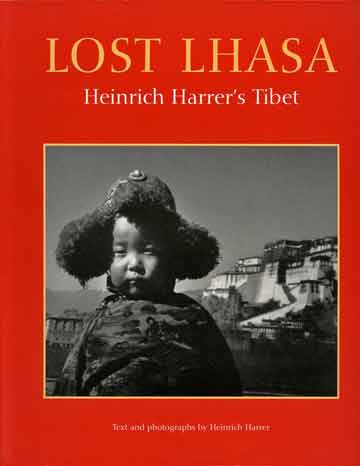
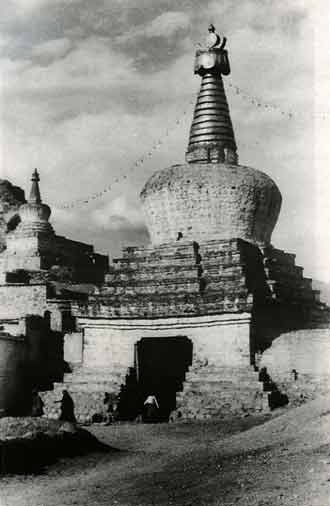
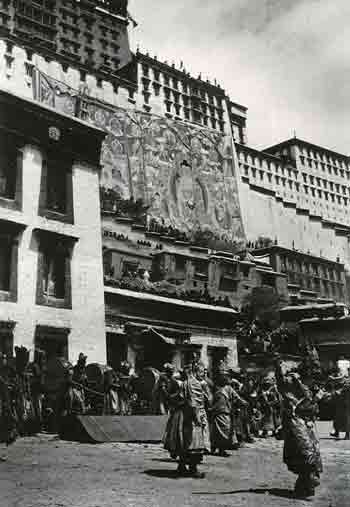

by Henrich Harrer. Published 1997. The photographic book Lost Lhasa is a perfect companion to the Seven Years in Tibet book, bringing to life the many scenes described in the book. Lost Lhasa presents 200 of Harrer's extraordinary black and white images giving us a glimpse of life in and around Lhasa. He also includes commentary, most taken from his book.
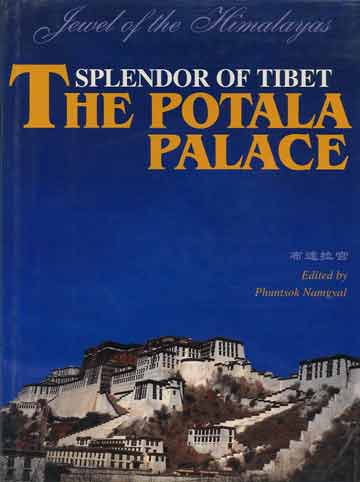
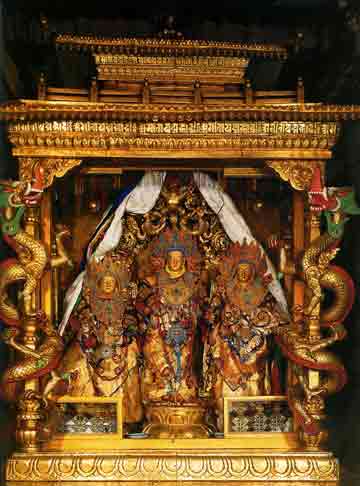
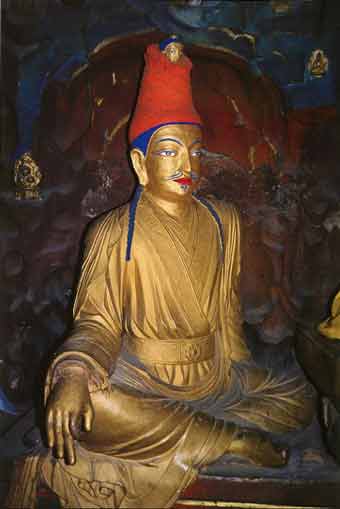


by Phuntsok Namgyal. Published 2002. This book contains over 150 photos of treasures inside the Potala Palace in Lhasa, Tibet, the palace of the Dalai Lamas. It features murals, thangkas, stupa-tombs of the Dalai Lamas, statues, mandalas, and the residence of the 14th Dalai Lama.
Since photography isn't allowed in the Potala Palace, I highly recommend this book either to prepare for your visit or to remember your visit afterwards.
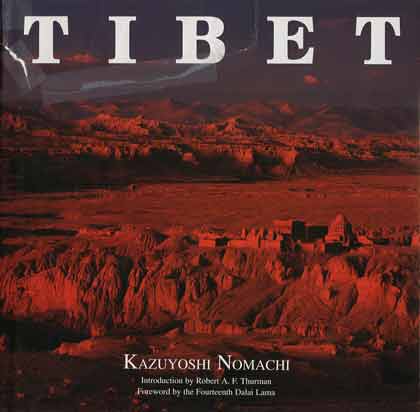
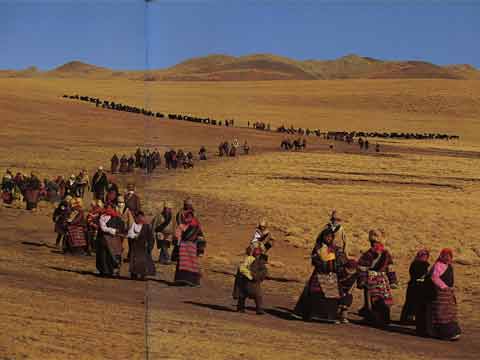
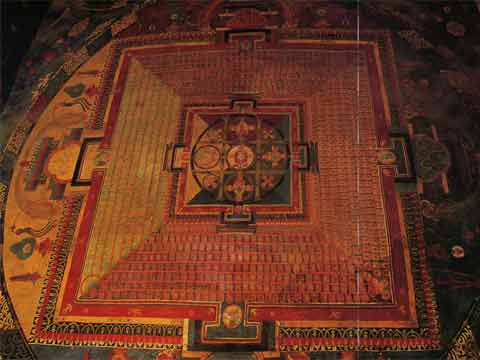

by Kazuyoshi Nomachi. Published 2001. An excellent coffee-table type photographic account of Tibet. The book features a 22-page section on Mount Kailash, a 24-page section on the Guge Kingdom and Tsaparang and Tholing in West Tibet, and photos of Gyantse, Tingri, and Lhasa, among the other parts of Tibet.
There are introductions by His Holiness the 14th Dalai Lama and by Robert Thurman. The cover photo is of Tsaparang in the Guge Kingdom in Western Tibet.
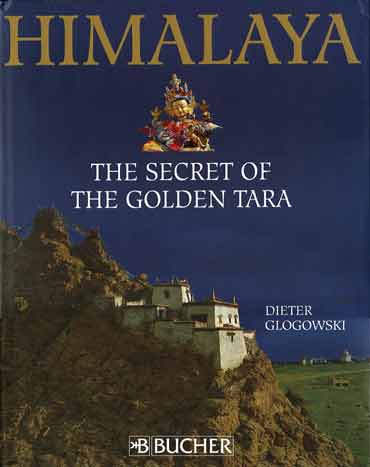
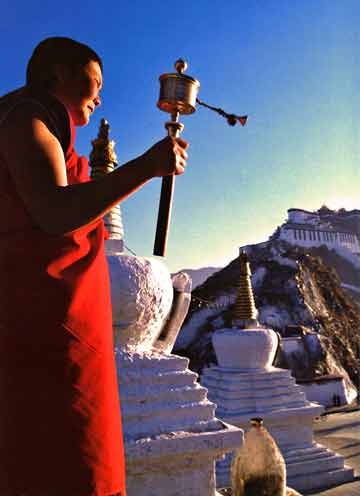
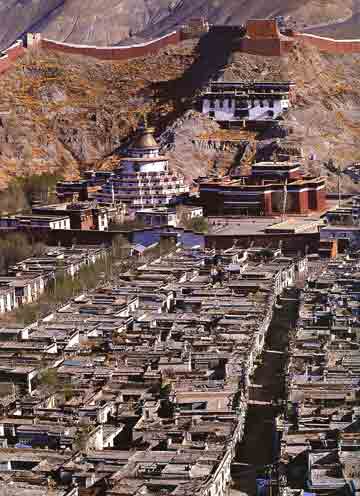
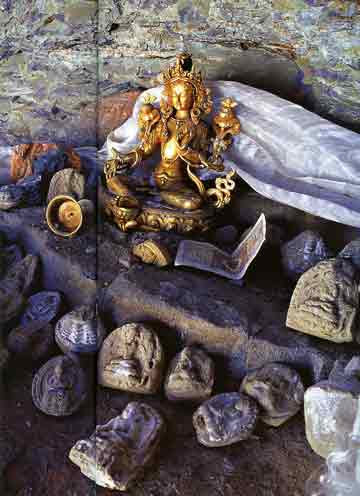

by Dieter Glogowski. Published in English in 2007. This mainly photographic coffee-table book starts with Dieter Glogowski trekking in the cold of winter in February 2003 to visit Sonam Yospel, a 95-year old monk, at Lingshed monastery in Ladakh. When Sonam and his student Pasang decided to escape Tibet in 1966, their abbot gave them a small golden Tara statue to place at the inner mandala of Mount Kailash in Western Tibet. But, Pasang had the statue when Sonam got arrested, and now Sonam wants Dieter to find Pasang and ensure that the statue made its way to Kailash.
Dieter's search for Pasang takes him to Bangalore and Dharamsala in India, Kathmandu and Gosainkund Lake in Nepal, Wangdi Dzong and Phunaka Dzong in Bhutan, and Darjeeling and Rumtek Monastery in Sikkim. Dieter learned that Pasang Lama died in Sikkim.
In 2004 Dieter Glogowski traveled to Tibet, visiting Lhasa, Ganden, Samye, Gyantse, Shigatse, before finally reaching Lake Manasarovar and Mount Kailash in July 2004. He completed Sonam's mission by trekking the Kailash inner kora to reach the south face of Mount Kailash and discovering the golden Tara statue is there. "Never have I experienced Mount Kailash as powerful as here. The throne of the Gods, the center of Tibetan cosmology, a place of absoloute silence - powerful and awe-inspiring."
Dieter Glogowski is my favourite contemporary Tibet and Nepal photographer. His photos are excellent. Dieter's text is fairly basic and easy to read. The special features are well written and contain interesting information.
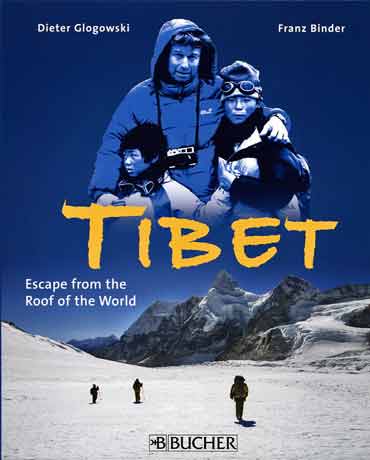
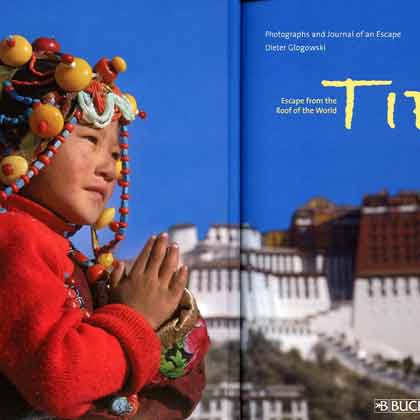
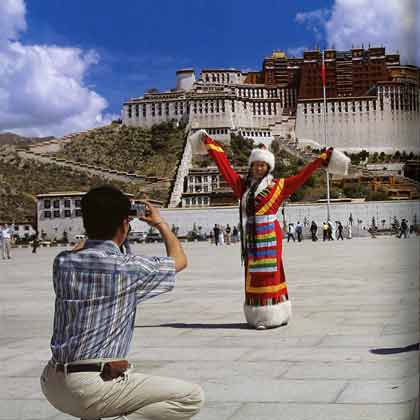
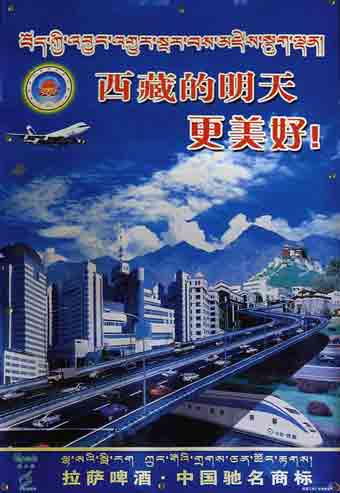

by Dieter Glogowski. and Franz Binder. Published in English in 2008. This coffee-table book filled with Dieter Glogowski's photos is really two books in one. In the first half, Franz Binder tells the story of Tibet, and the current refugee problem. In the second half, Dieter Glogowski tells the story in text and photographs of helping Tibetan Refugees trek across the Nangpa La pass from Tibet to Nepal. "To a foreign country, / for refugee I had to go./ I crossed the Himalaya mountains / in hunger and cold. / To meet the protector, the wish-fulfilling jewel, / I thought I have to go." - Traknjon Yamaraza, Refugee poem.
Binder provides a brief history of Tibet, including their relationship with the Mongols, the Dalai lama incarnations, and the interaction with China, including after China liberated Tibet. "The tragedy of Tibet's refugees began in 1959 when the Dalai Lama went into exile in India. ... Until today, each year more than 30,000 Tibetans have been escaping at great risk of life and limb; almost half of them monks or nuns, almost one third children and youths. ... Most refugees take the path across the almost 5,800-meter high (19,028 ft) Nangpa-la pass, leading from Tingri in South Tibet to the Khumbu area in Nepal. ... For China the refugee issue means a serious loss of face in the eye of the public world, because it is evidence to the fact that the Tibetans are not at all happy with the 'socialistic paradise,' which had been established in Tibet by the force of arms."
"Have compassion and work for peace. / And I say it once again: never give up. / No matter what happens, do not give up." - The 14th Dalai Lama.
Dieter Glogowski starts his story on July 24, 2006 in Beijing, and then travels by the new train to Lhasa. He then visits Ganden, Shigatse, and Everest and Rongbuk Monastery. On November 24, 2006 he picks up the story in Kathmandu and then treks to the Nangpa La, where he meets two 10 and 14-year old boys who had just crossed the pass into Nepal. They trek back to Thame, Namche Bazaar, and on to a monastery near Junbesi. One boy stayed at the monastery while the other went to Dharamsala.
Dieter Glogowski is my favourite contemporary Tibet and Nepal photographer. His photos are excellent. I especially liked the photos of the Chinese influence on Lhasa, and the trek to and from the Nangpa La - it makes me want to do that trek someday. The text from Franz Binder is fairly straightforward and easy to read. It is balanced and to the point, but surprisingly provides a lot of information and insight for such a brief story. I especially liked the history of Tibet's relationship with China. Dieter's story is very brief and straightforward.
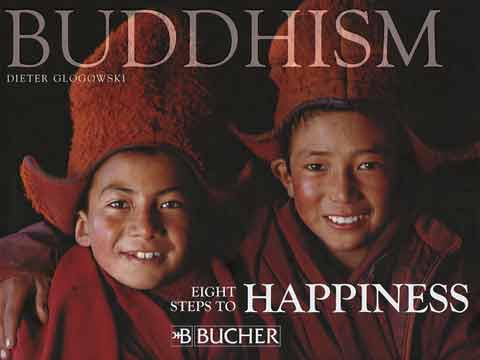
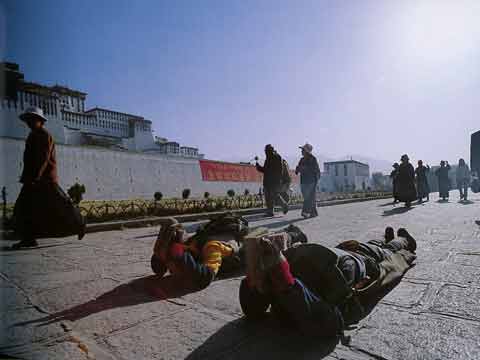


by Dieter Glogowski. Published in English 2008. Dieter Glogowski alternates his photos with Buddhist-type quotes from the 14th Dalai Lama, the Dhammapada, Mahatma Gandhi, Thich Nhah Hanh, and Mother Teresa, among others, to illustrate Buddhist techings on wisdom, consciousness, compassion, equanimity, love, impermanence, mindfulness, and meditation. The photos feature Tibet (Lhasa, Mount Kailash, Gyantse and Shigatse), Kathmandu (Pashupatinath, Boudhanath, Swayambhunath), Nepal (the Terai, Lower and Upper Mustang, Khumbu), India (Ladakh, Dharamsala, South India), Bhutan, and Sikkim. Some of the photos have already been shown in his other books.
My favourite quotes from the book are: Wisdom - 14th Dalai Lama: It is important to know that there are three kinds of wisdom: / Wisdom resulting from listening, / wisdom resulting from reflection and / wisdom resulting from meditation.
Consciousness - the Dhammapada: We are what we think / All we are arises from our thoughts / With our thoughts we create the world.
Compassion - Mother Teresa: Always try to act in a way that people are happy to have met you.
Equanimity - the Suttanipada: We exchange the breath of air with the rain forests. We drink the very water that flows into the ocean. Water and air are integral parts of our lives. And we are part of the whole world. We realize that we depend on each other, that we are related to each other. Then we will deal with all of nature carefully, we are part of it.
Love - Phil Bosmans: A flower needs sun to become a flower. / A human being needs love to become a human being.
Impermanence - 14th Dalai Lama: It is my firm conviction that the power of the gun barrel is of limited time. / But the power of truth will increase more and more with time.
Mindfulness - Thich Nhat Hanh: Real life is experienced here and now. The past has already gone; the future has not yet come. Only in the present moment can we truly live life.
Meditation - Sogyal Rinpoche: The gift of learning to meditate is the greatest gift you can give yourself in this life. For it is only through meditation that you can undertake the journey to discover your true nature, and so find the stability and confidence you will need to live, and die, well; Meditation is the road to enlightenment.
Dieter Glogowski is my favourite contemporary Tibet and Nepal photographer. His photos are excellent. The quotes are short and thought-provoking.
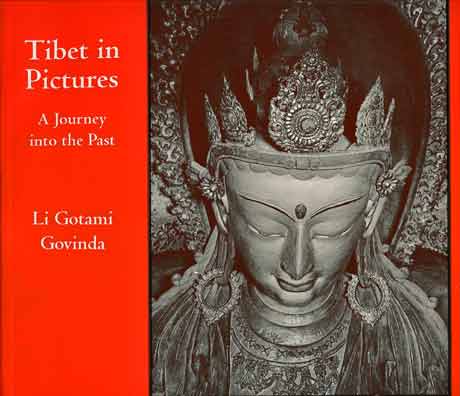
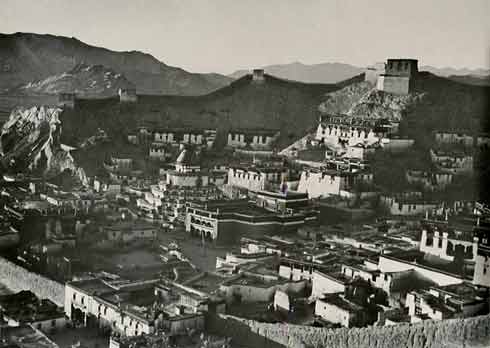
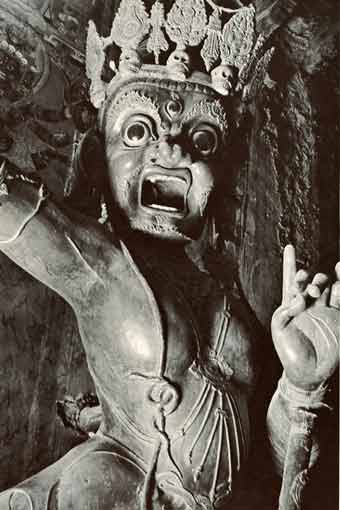

by Li Gotami. Published 2002. A perfect companion book to husband Lama Angarika Govinda's Way of the White Clouds, Li Gotami recounts with over 200 black and white photographs their travels from 1947 to 1949 to Central and Western Tibet. The book helps capture a lost time before the Chinese invasion.
Originally published as two volumes, the first part details their visits to Sikkim, Gyantse and Shigatse. The second part starts with their visit to holy Mount Kailash and Lake Manasarovar in Western Tibet. They then traveled to the Guge Kingdom of Tholing and Tsaparang, staying for three months. Each day they ventured into the temples to sketch and photograph, capturing the state of many of the statues before they were damaged or destroyed by the Chinese in the Cultural Revolution.
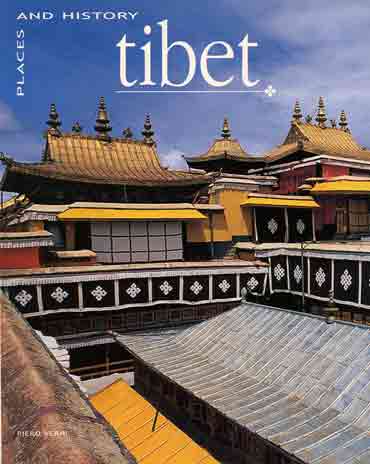
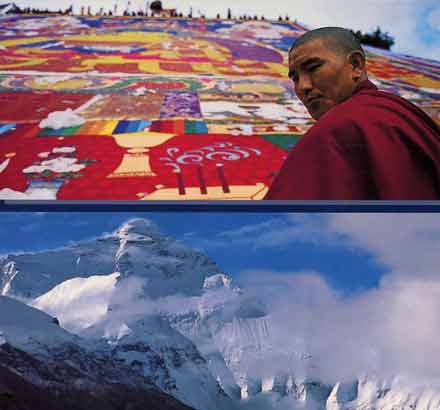

by Piero Verni. Published 2005. I could have put this book in the Guides section above, but I think it is more a photographic book. It will help you visualize what you can see on your trip to Tibet.
It includes a 28-page section on Lhasa and the surrounding area, including rare photos inside the Jokhang and Potala Palace. It has a section on Monasteries featuring Shigatse Tashilhunpo, Gyantse Kumbum, Samye and Sakya. It also includes Mount Everest and Mount Kailash.

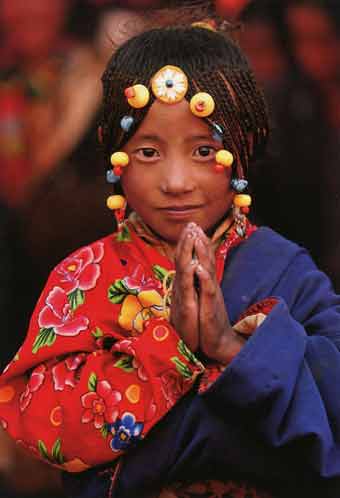
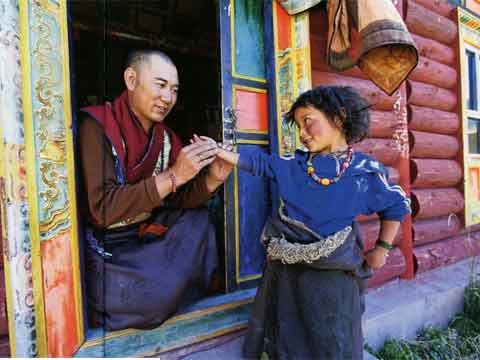

Text and photographs by Matthieu Ricard. The photographs focus mainly on the Buddhist Monks and pilgrims and nomad in Kham in Eastern Tibet, including the summer festivals featuring races and equestrian games . There are a few photos from Kathmandu, Samye Monastery, Mount Kailash and Lake Manasarovar.
The photos are very good, but I prefer more tourist site photos than the pilgrim and monk photos. The cover photograph is excellent.
Some of the official Tibet sites I visit include:
Here are my favourite Tibet trekking and informational websites:
I thoroughly enjoy reading other people's Tibet travelogues and looking through their Tibet photos. Here are my favourites:
Here are my favourite Tibet movies:
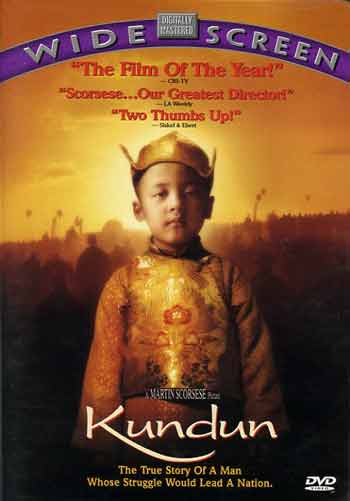
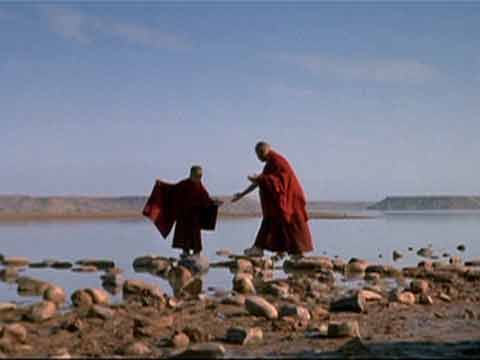

Directed by Martin Scorsese. Starring Tenzin Thuthob Tsarong and Tencho Gyalpo. Released 1997. 134 minutes. Nominated for four Academy Awards. Filmed in Morocco.
This movie tells the life of the current 14th Dalai Lama (known as Kundun in Tibet) from his birth to his escape to India in 1959. It beautifully depicts the culture of Tibet at that time - the devout people and their dress, the monasteries, the sand mandala, and the disturbing scenes with the Nechung Oracle spinning in his trance.
"I was trying to put together a story through images, music, colour and light; a movie that would ultimately reflect emotionally and psychologically, the philosophy of a people and Tibetan culture" - Martin Scorsese.
The story is told through the eyes of the Dali Lama. So we only know as much as the boy knows. Although Tibet is shown as an idyllic land, the film shows that the Dalai Lama recognizes and wants to fix problems as well. He tells Mao, 'I see a lot of ways to change, especially industrialize Tibet'. After the Chinese invasion at the end of the film he says, 'we were just about to change, we were about to do it ourselves'.
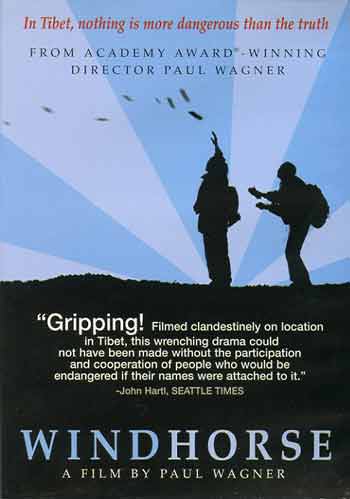
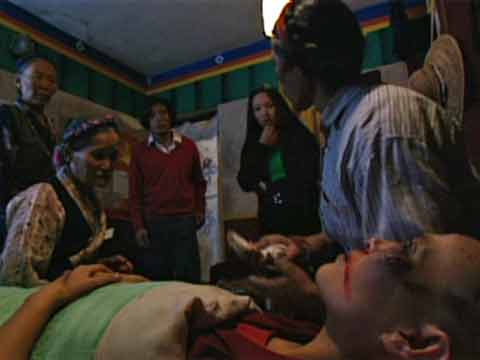

Directed by Paul Wagner. Starring Dadon and Jampa Kelsang. Released 1998. 97 minutes. Filmed in 1996 in Nepal with some external scenes illegally shot in Tibet
This film tells the story of a Tibetan family who migrate from Western Tibet to Lhasa and their reactions to the Chinese occupation. The brother Dorjee has no job, drinks heavily and plays pool and hangs out in brothels. The sister Dolkar is fluent in Chinese and is becoming a successful singer on the Chinese-owned nightclub circuit in Lhasa. She has a Chinese boyfriend, Duan-ping, who is eager to promote her career. Their cousin Pema is a Buddhist nun.
When the Chinese forbid Dalai Lama images, Pema cries out publicly for Tibetan freedom at the Barkhor and is arrested and sent to prison. She is released to her family, weakened and on the verge of death, and her testimony about Chinese prison brutality is videotaped by a sympathetic American tourist. An undercover monk notifies the Chinese authorities. The movie is in Tibetan and Chinese with English subtitles.
The film does a good job of maintaining a balanced view to the issues and the people involved, with the meanest person being a Tibetan in the prison, and a Chinese Party member being depicted as caring and heroic. Should the Tibetans integrate with the Chinese or hate them? Should the Chinese integrate with the Tibetans or keep them under the gun? The amateur actors used their own experiences to display raw genuine emotions to the story lines.
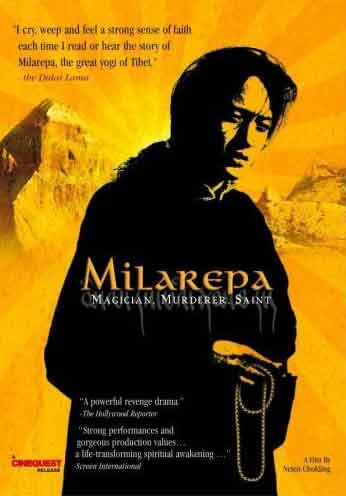


Directed by Neten Chokling, who was an actor in Khyentse Norbu's The Cup. Starring Jamyang Lodro and Orgyen Tobgyal. Released 2006. 90 minutes. Tibetan with English sub-titles. Filmed in the Spiti Valley on the Indian-Tibetan border. This award winning film tells the story of the first half of Milarepa's life (1052-1135), whose path to enlightenment began with revenge. A second movie is planned for 2009 to complete the story.
When his well-to-do merchant father died, Milarepa's uncle and aunt took all the family's wealth, suddenly thrusting Milarepa and his mother into poverty. His mother plots revenge by sending Milarepa away to study sorcery. Milarepa comes back to the village and causes a violent lightning storm to kill many people.
When the villagers chase him, Milarepa causes large rocks to fall from a ridge blocking their way. As he escapes Milarepa meets an old monk, and learns of Buddha's teachings. Milarepa returns to his sorcery teacher, who advises him to study with Marpa. The film ends with Milarepa seeking Marpa.
The landscape is stark and beautiful. The special effects are quite well done - I especially liked the scene where Milarepa gains mastery in sorcery, a bit like a Pink Floyd psychedelic trip from the 60s. My favourite scene was when Milarepa meets an old monk while escaping from the villagers, and sits quietly with old Buddhist paintings all around him on the wall. You can feel that his redemption is at hand.
As companions to this movie, I highly recommend reading a book about his life such as The Magnificent Trickster - The Story Of Milarepa by Molly MacGregor, and some of his teachings like in the book Milarepa: Songs On The Spot by Nicole Riggs.
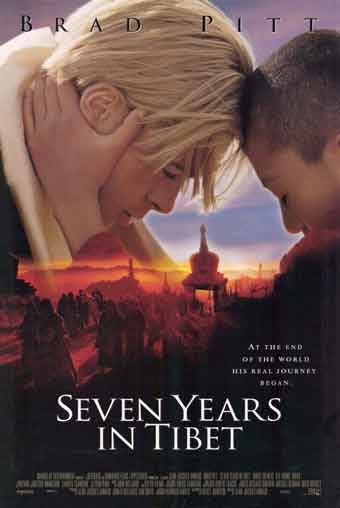
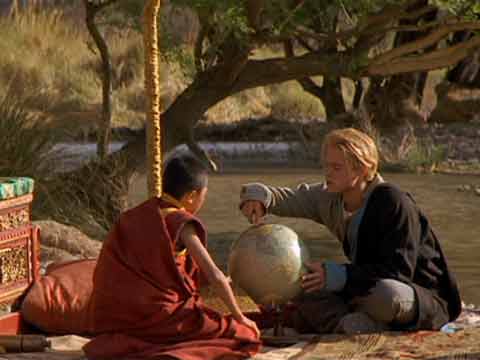

Directed by Jean-Jacques Annaud. Starring Brad Pitt and David Thewlis. Released 1997. 139 minutes. Filmed in British Columbia, Argentina, Austria, Chile, and Tibet.
Although many people were disappointed that Brad Pitt starred in this film, it is quite probable that the lavish $70 million film would not have been made without him.
The movie is an adaptation of the book, telling the story of Austrian Henrich Harrer and Peter Aufschnaiter's escape from a British POW camp in India and their travels to Lhasa. Harrer stayed in Tibet for, eh, seven years, and met and tutored the young 14th Dalai Lama. I especially like the scenes where Harrer is building a movie theatre and must have all the worms carried one by away from the digging because all life is sacred. For an authentic touch, the film has the Dalai Lama's sister Jetsun Pema playing the role of their mother Amala.
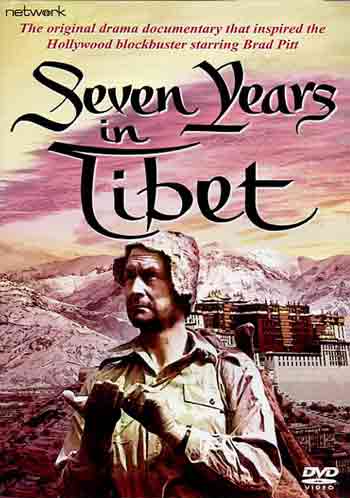
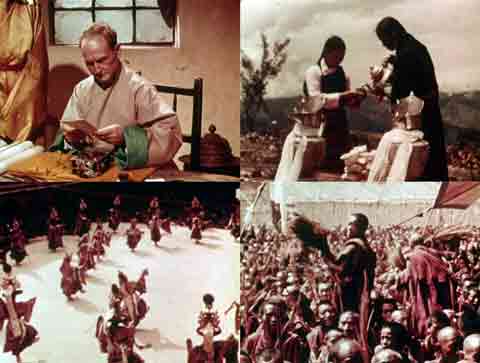
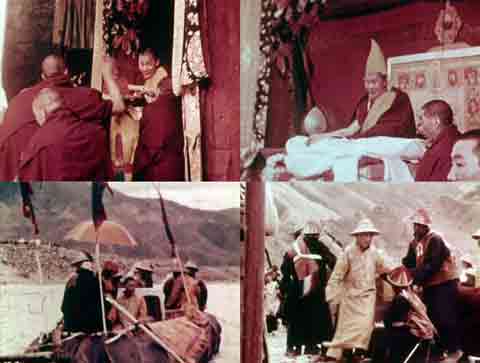

Directed by Hans Nieter. Released 1957. 74 minutes. This is really two films in one - one is a docudrama of the story of Henrich Harrer's escape from a British POW camp in India and his travel to Lhasa, and the other is a documentary of Lhasa and Tibet showing original scenes filmed by Heinrich Harrer and Sir Basil Gould.
My favourite part of the movie is this original film footage, including the Potala Palace, scenes of religious festivals including Losar and featuring masked dances, the aristocracy of Lhasa and how they dress, the Dalai Lama meeting monks and greeting and blessing the people, and the escape of the Dalai Lama towards India in 1950.
Most of the staged scenes are ok except one really bad scene when an actor looks and acts like a clown when he tries to imitate the Nechung Oracle.
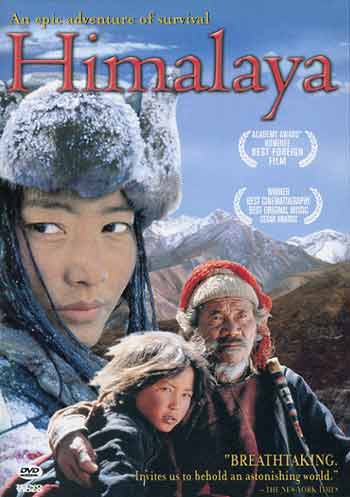


Directed by Eric Valli. Starring local Dolpo people. Released 1999. 108 minutes. Nominated for Best Foreign Language Film Oscar in 2000. Filmed in Nepal's Dolpo region.
This movie is based on a true story and can be considered a documentary, depicting the life style and customs of the Tibetan Dolpo people. When his son dies returning from Tibet's salt lakes, the village chief blames his son's friend and refuses to give him his blessing as the new chief. The scenery is stunning, taking place in the autumn and winter of the high Tibetan valleys, plateaus, gorges, deserts, and mountain lakes. This film was nominated for Best Foreign Film at the Academy Awards.
"When you see the snowstorm, it is a real snowstorm. It was in front of the camera and behind the camera. For nine months, we were on the trail of the real caravan. What you see on the screen is what we also experienced as filmmakers." - Eric Valli.
Here are my favourite Tibet documentaries:
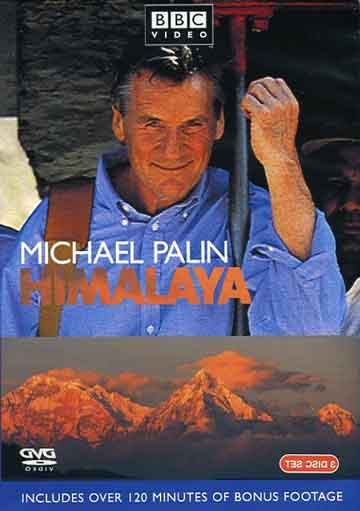
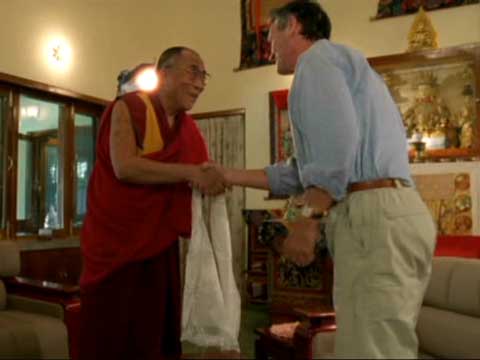
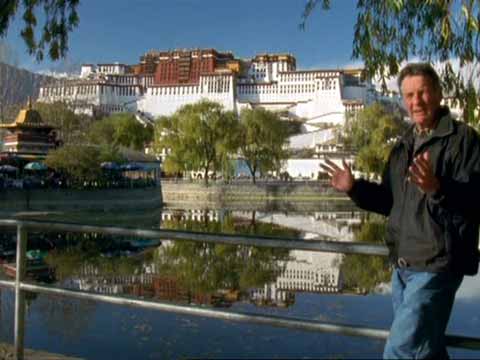

Directed by John-Paul Davidson and Roger Mills Shown on TV in 2004. Six episodes. 352 minutes. BBC. Extras include 31 minutes of interviews with Michael and 124 minutes of deleted scenes. Note: Episode 3 contains scenes of Everest North Base Camp.
Episode 2 A Passage to India (59 minutes plus 42 minutes of deleted scenes) features Lahore, Amritsar, Simla, Srinigar, Dharamsala (10 minutes plus 2 minutes of deleted scenes) and the Dalai Lama (10 minutes plus 11 minutes of deleted scenes).
Palin travels to McLeod Ganj and Dharamsala, where prayer flags, prayer wheels, chanting monks, and monasteries let you know you are in Buddhist country. The town is thronged with Tibetans in exile and many western backpackers flocking here to the home of the Dalai Lama. Michael gets his astrology chart done by the Buddhist monks, and watches a group of young Tibetan children in traditional costumes performing a traditional dance. He interviews the Dalai Lama, mainly asking about his travels and the people he meets. "From my childhood I always had curiosity, or desire to know more about different people, different culture.”
Episode 4 The Roof of the World (59 minutes plus 9 minutes of deleted scenes) features the jeep ride to Lhasa (10 minutes), Lhasa (17 minutes plus 2 minutes of deleted scenes), Namtso (5 minutes), a nomad's yak tent near Yushu (10 minutes), and the horse festival at Yushu (17 minutes plus 7 minutes of deleted scenes).
From Everest North Base Camp, Palin travels to Shigatse to visit Tashilhunpo, the home of the Panchen Lama and a large statue of Maitreya. After a brief stop at Gyantse, where there was a major battle with the British in 1904, and passing by Yamdruk Tso, they arrive in Lhasa "now about as dark and mysterious as Disneyland." Michael visits the Potala Palace, walks the Barkhor kora and visits the Jokhang Temple, learns about how monks debate at Sera, and visits Drepung and Nechung, once home to the Nechung Oracle. He visits a nightclub with strobe lights and pulsating music alternating with a traditional Tibetan dance. As he leaves Lhasa, Michael observes the signs advertising the new railway to Lhasa.
After a refreshing swim in the hot springs (4300m) north of Lhasa, Michael arrives at the sacred Namtso (4700m) lake in the numbing cold at the onset of Winter, and walks with the pilgrims on a part of the kora. He then jumps forward to summer to visit a nomad family northeast of Lhasa. The scenery is a brilliant green as the yaks fatten themselves up in the green pastures. Michael tries milking a dri and helps out inside the yak hair tent. Michael is at his personable and humourous best as he stirs the spitting and bubbling food, helps make yak butter, and talks to the father, Sonam, about children.
Sonam drives Michael to Yushu on his motorbike to visit the town and the nearby week-long annual horse festival, the biggest gathering on the Tibetan plateau. Nomads take a holiday and travel from all over to dress up and visit old friends at their makeshift tent city in an idyllic setting with green grass and sparking water. Colourful dancers perform while feats of horsemanship include trying to grab as many scarves off the ground as possible, and Khampa horsemen twirling their ancient rifles around their heads before firing them at a small piece of paper on the ground. Michael shops for amber and coral and caterpillar fungus herb medicine before rolling hoops to win cigarettes. On the way out of town, they stop at Gyanak Mani, believed to be the largest collection of mani stones in Tibet.
Wow! Almost every scene is spectacular. Beautifully filmed. Nicely paced. Michael Palin is very entertaining.
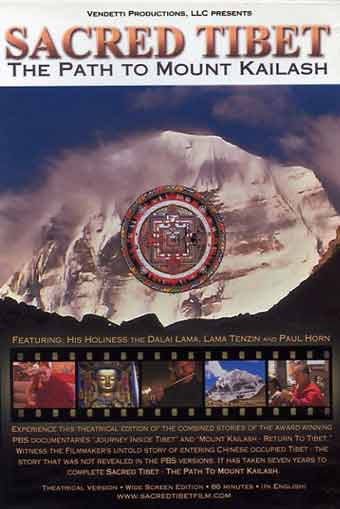


Released 2006. 102 minutes. This video combines PBS documentaries "Journey Inside Tibet" and "Mount Kailash - Return To Tibet". It includes a bonus feature with the Dalai Lama speaking about Mount Kailash and Paul Horn surreptitiously playing his flute inside the Potala Palace.
The first half of the film traces the journey of Lama Tenzin, who escaped from Tibet to Kathmandu, and flutist Paul Horn from Kathmandu to Lhasa passing beautiful Tibetan scenery on the way. Lama Tenzin had to dress in Western-style clothes to ensure he wouldn't get caught. The smile on the Lama's face as he meets his family in Shigatse for the first time in 40 years was the very image of worldly happiness. Horn wanted to fulfill a personal desire to play his flute inside Potala Palace in Lhasa. He persuades a monk to allow him to play in The Grand Assembly Hall when the workers take their lunch break.
The second half of the film follows the 2003 pilgrimage of the 71-year old Horn to release Lama Tenzin's ashes, who died in 2001, on sacred Mount Kailash in West Tibet. After witnessing Saga Dawa and the raising of the Tarboche pole, he treks around Mount Kailash, riding a yak when the going gets especially hard like the strenuous crossing of the 5630m Dolma La. I especially liked the long sequence watching the sun rise on the mist-filled summit of Kailash, with Horn's flute providing the perfect background.
The filming is slow and easy, bringing out the expansiveness and quiet of the vast Tibetan plains. "I can hear the silence. I can hear the wind. I can feel the wind. It's being away from everything, and I feel the chatter in my mind each day is getting less and less and less and less." - Paul Horn.
You can buy the music from the video in Paul Horn's CD - Tibet: Journey to the Roof of the World.
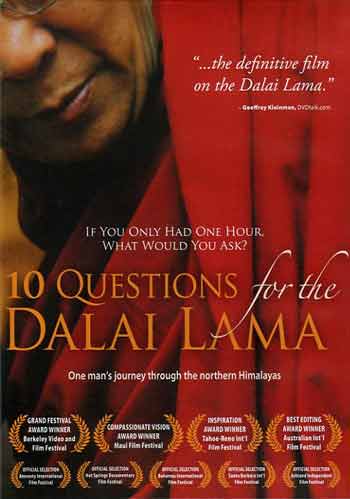
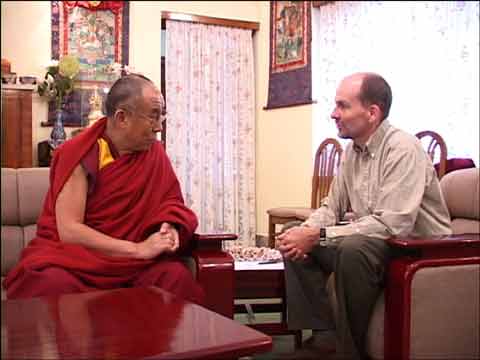

By Rick Ray. Released 2006. 85 minutes. Rick Ray describes the film perfectly in one of the bonus features: "... a tapestry of my personal journey, my thinking of the questions, his biography, the Tibetan struggle, and then his answers all woven together into one story."
After traveling around India, including visiting Ladakh where Tibetan culture and lifestyle still flourish, Rick Ray visits the Dalai Lama's monastery in Dharamsala. He interviews the Dalai Lama's secretary and then has an hour with the Dalai Lama. Among the 10 questions, he asks the Dalai Lama about why the poor often seem happier than the rich, about Tibetan traditions and culture, and the China issue. Often laughing aloud, the Dalai Lama answers the questions with simple, yet profound, insight. Ray intersperses film footage with the answers.
Rick Ray shows lots of rare archival footage that he was able to find, including the young Dalai Lama in 1939, the Chinese invasion, the Dalai Lama after he fled to India, and his acceptance speach for the Nobel Peace Prize. The modern footage of Lhasa shows kids on go-carts across from the Potala Palace, the ever increasing number of Chinese, and the ever present security cameras, resulting in what the Lama refers to as a "cultural genocide."
Bonus features are a 19-minute interview with Rick Ray, a 52-minute interview with the Dalai Lama's secretary Tenzin Geyche Tethong, and 17 minutes of six deleted scenes.
I highly recommend this film as a basic overview of the Dalai Lama and his philosophy, and the Tibetan issues. If you are looking for in depth analysis, this is not the film for you. The film could have been a bit tighter if some of the Indian travel was moved to the deleted scenes. I especially enjoyed seeing the Dalai Lama's playful side, where he doesn't pay attention at long pageants and celebrations, and dashes delightfully into the crowd that had gathered to watch a religious procession because he recognized someone there. The soundtrack by Peter Kater is very good, with beautiful piano playing with occasional flute and chanting.
Two Dalai Lama quotes I really liked are: "Destruction of your enemy is also destruction of yourself." In the U.S.: "I don't admire your weapons. I admire your principles: democracy, liberty, freedom."
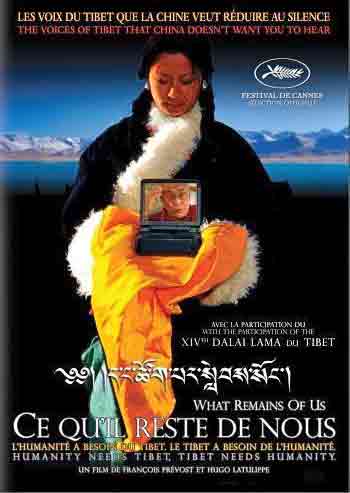
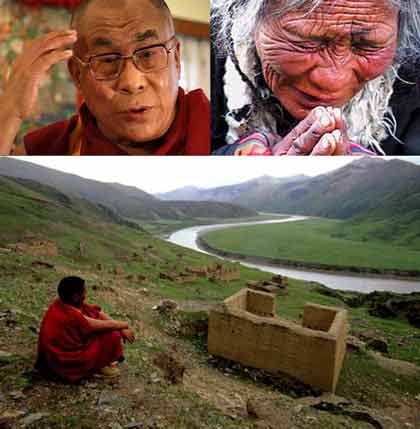

by Kalsang Dolma. Released 2004. 77 minutes. Filmed in Tibet. The young Tibetan from Montreal captured a short message from the Dalai Lama to the people of Tibet and brought it on a small DVD Player to Tibet. She showed it to monks, pilgrims, and young students. It was heart-rendering watching the faces of the pilgrims as they watched the video, wild-eyed in amazement, some prostrating and sobbing, many hearing their spiritual leader's voice for the first time.
Having visited Tibet several times myself, I found this documentary very balanced. In addition to showing the older devout pilgrims, it also shows young giggly students who don't seem to know anything about their culture.
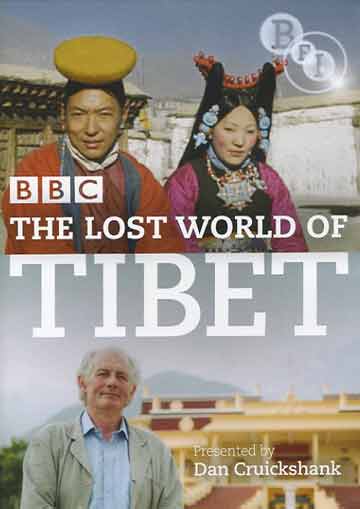

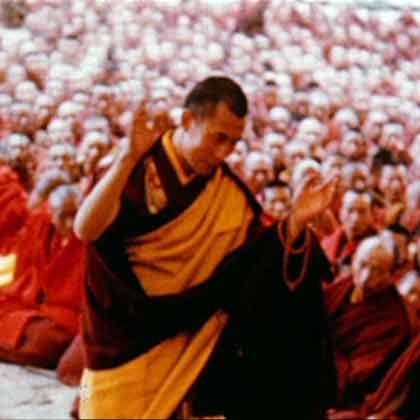

Produced and directed by Emma Hindley for the BBC. Presented by Dan Cruickshank. Released 2007. 89 minutes. This documentary shows life in Lhasa prior to the Chinese occupation of 1950. The film mixes current scenes in Dharamsala, the home of the Tibetan Government in Exile, recently restored colour video footage from the 1930s, 40s, and 50s, and recent interviews with the Dalai Lama and other Tibetans who lived through those times. The old video footage shows Lhasa, including the Potala Palace, the Barkhor and Linkhor, and Norbulingka, the people of Lhasa and their dress and traditional costumes, Buddhist practices like prostration, festivals like Losar New Year, masked dances, horseback riding, picnics, folk dancing at Norbulingka, military performances, wrestling, weight lifting, and foot races.
The Dalai Lama is almost like a giddy schoolboy watching the old footage of his parents and family, and watching himself over those early years. The Dalai Lama is carried in a large procession through the streets of Lhasa between his Winter Potala Palace and his summer Norbulingka Palace. We see the Dalai Lama arriving at Drepung monastery to begin the start of the debates for his doctor of Buddhism exams in front of 8000 monks. He continued his test at Sera monastery, and the final exam went smoothly.
There is black and white video footage of the Chinese invasion of Tibet and on the streets of Lhasa in 1951. We see the Dalai Lama crossing the river in a boat as he departs Lhasa in 1954 to visit China and meet with Mao Tsetung. The situation in Lhasa in 1959 became very tense and the Dalai Lama decided to leave Tibet, filled with "anxiety, fear, a little doubt, hesitation, and sadness all mixed".
DVD extras: Worldwide TV version (59 minutes). Contemporary life in Dharamsala (23 minutes): monks and nuns praying, chanting, eating, and debating, making butter sculptures; the Tibetans, Indians and foreigners on the streets of Dharamsala; a colourful Cham masked dance. There is also some extra old film footage (6 minutes) of a massive butter sculpture being raised on a scaffold, Tibetan wild flowers, Gyantse, and crossing the Tsangpo River in a large barge and a coracle.
The old footage of the Dalai Lama and the people and ceremonies of Lhasa is excellent. The modern interviews give this old footage a freshness as they remember the old times.

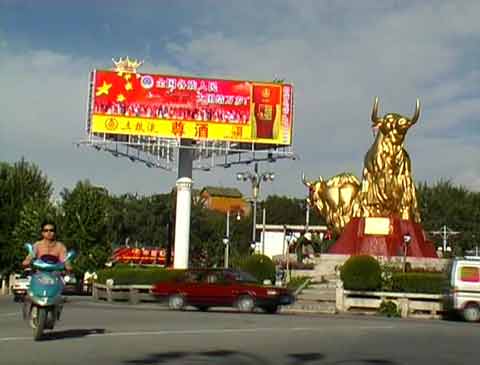
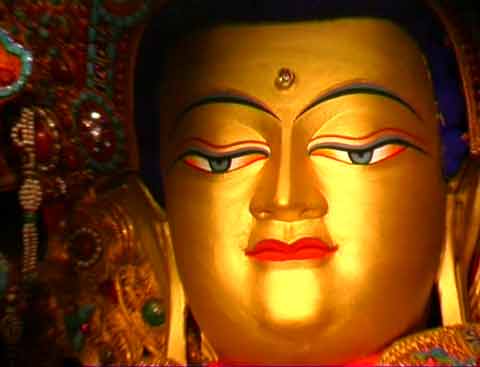

Welt Weit. 2006. 60 minutes. In German. This video starts off with 44 minutes visiting Lhasa. After some general scenes of Tibetan landscape and some black and white archival footage of the invasion of Tibet by Mao and the Chinese, the video jumps to the summer of 2005 showing the vastly Chinese portion of the city, including the gaudy amusement park across from the Potala. The video then visits the Potala Palace, the Barkhor, Jokhang Temple, Norbulingka, and Drepung Monastery.
There is 4 minutes on Shigatse, 2 minutes on Katok monastery in East Tibet, and 10 minutes on Mount Kailash. This DVD also has a bonus feature (25 minutes) of the best of Nepal excerpted from DVDs Nepal Himalaya-Trekking im Reich der Achttausender, and Nepal - Königsstädte im Kathmandu-Tal.
The filming is very good with scenes even inside the Potala, Jokhang, and Norbulingka, which are normally not allowed. Although short, the portion of the video on Mount Kailash is very good, showing the pilgrims doing the Kailash kora, monks chanting inside Zutulpuk, and a few scenes of Lake Manasarovar. This is one video where I wished I understood more German than I do, as the narration appeared to be nicely detailed.
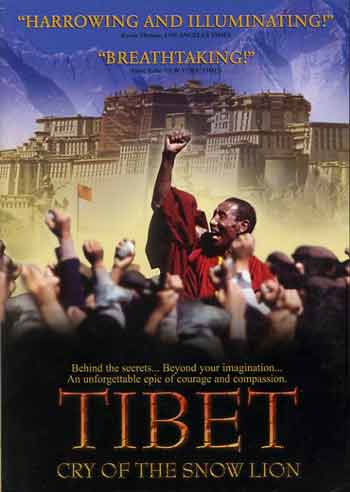
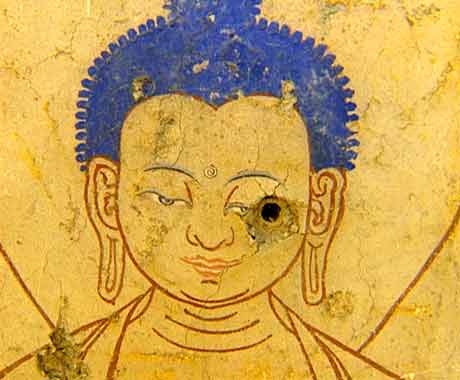

Directed by Tom Piozet. Released 2002. 104 minutes. This pro-Tibetan documentary intersperses interviews with monks, exiled Tibetans, and people like Robert Thurman, with beautiful mountain scenery and Tibetan history, horse races, masked dances, school children, and pilgrims and monasteries. You could buy this video alone for the movies of the Dalai Lama as a young boy and man, his address to the U.S. Congress, accepting the Nobel Peace Prize, to recent interviews.
It graphically documents the Chinese genocide of Tibetans, monasteries, and their way of life, from first-hand accounts and film footage. Mao's Great Leap Forward in 1958 was disastrous with rampant starvation in China and Tibet. But, the Cultural Revolution, starting in 1976, was especially brutal in Tibet with Mao's belief that "Religion is poison". The current situation sees continuous migration of Chinese to Tibet. Chinese to Tibet.
The DVD includes over an hour of bonus features, including interview clips with the Dalai Lama and his address to Washington Press Club in 1993, Robert Thurman commentary, and extended footage of some of the scenes cut short in the film.
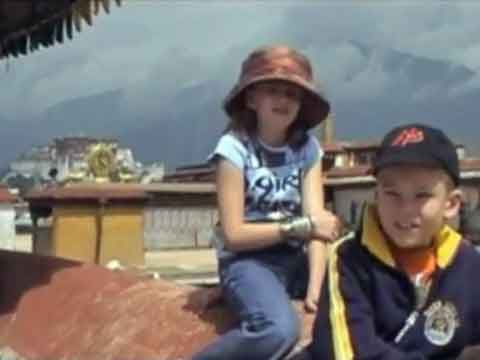



by Ed van der Kooy and Piet Warffemius. This 65-minute video on Youtube in seven parts shows a trek with their young son and daughter to Lhasa, including the Jokhang, Barkhor, the Potala Palace, Norbulingka, Sera, Drepung and a trip to a festival outside Lhasa.
The filming is very professional, with lots of focus on the local pilgrims and people. The pace is nice and slow, peaceful, quiet - kind of like prayer flags flapping in the wind. The background music is very good.
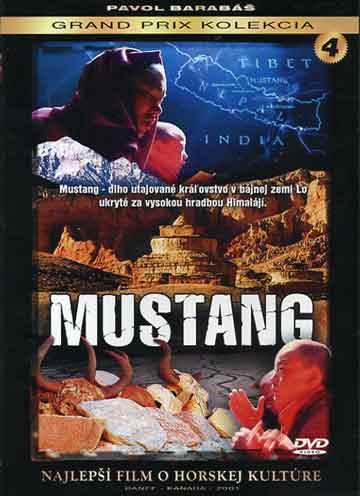
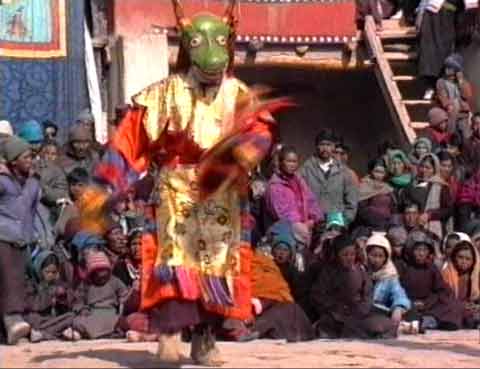

by Pavol Barabas. This DVD has three documentary films in Slovak and English. The other two are Mustang (2001, 27 minutes) and Their Home Is below Kangchenjunga (1998, 25 minutes). Released 1998. 23 minutes. The film starts with beautiful images of the Everest North Face and Rongbuk monastery and the drive to Lhasa. In Lhasa, Pavol visits the Jokhang Temple, the Barkhor, the Potala Palace, and Norbulinka. The commentary briefly discusses how Buddhism came to Tibet from India, and how the Chinese now control monks and monasteries. The film shows monks chanting sacred texts and performing colourful masked dances. Pilgrims prostrate at the Jokhang Temple, turn large prayer wheels and light butter lamps.
The tourists sights and Buddhist symbols and practices are well filmed and give you a very good sense of what you will see in Tibet. Buddhist teachings are lightly documented. The narration is very good. It is well filmed with good pacing and length.
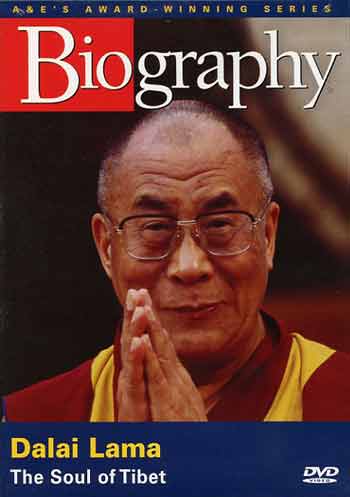


Released 2005. 44 minutes. This A and E documentary is a fairly basic biography of His Holiness the 14th Dalai Lama, including some good historical footage, a few conversations with the Dalai Lama, and some interviews with famous Buddhists like Robert Thurman and Richard Gere.
It incorporates some historical footage I hadn't seen before of the Dalai Lama as a child and young man and several scenes with India's Nehru, somewhat of a mentor to the young Dalai Lama.